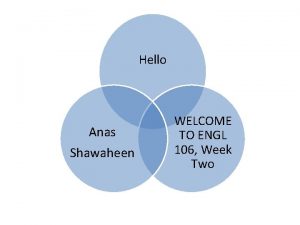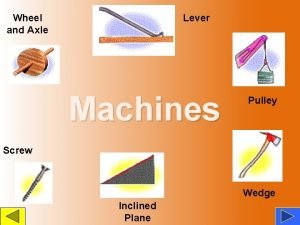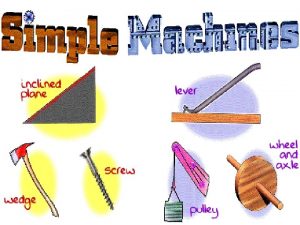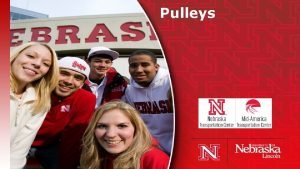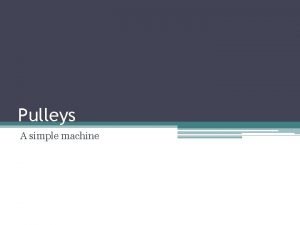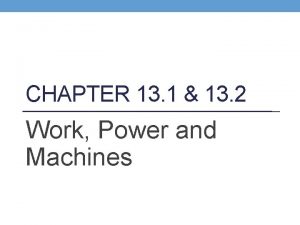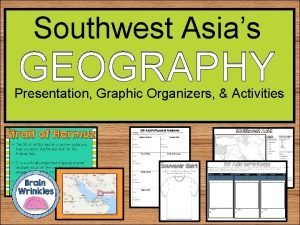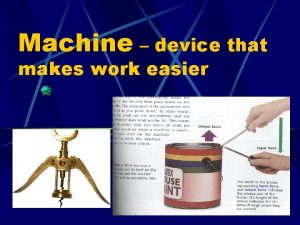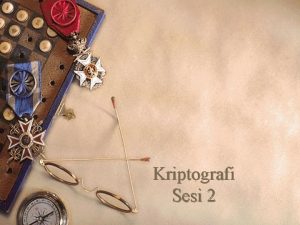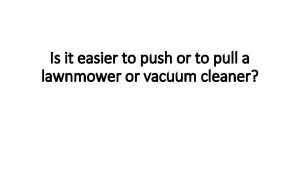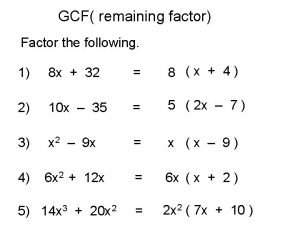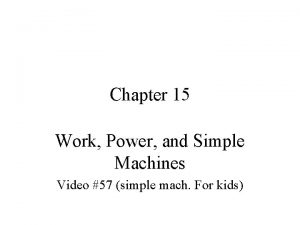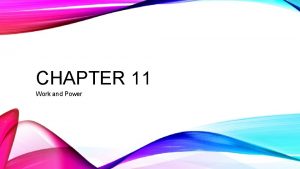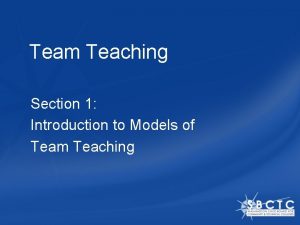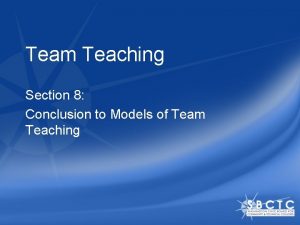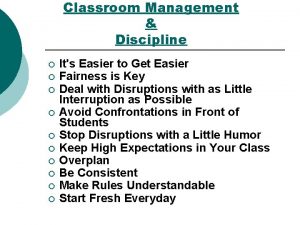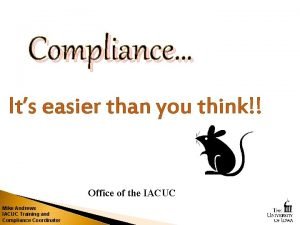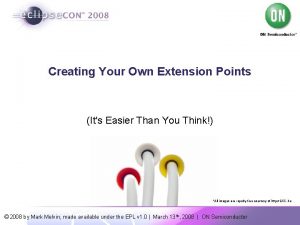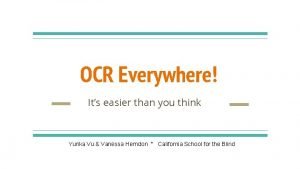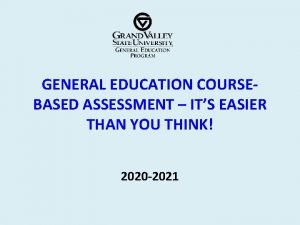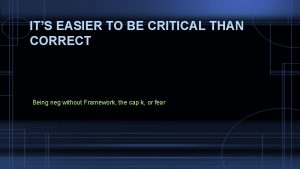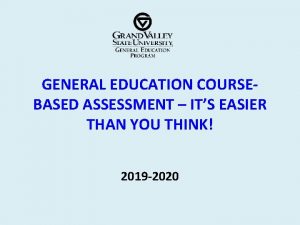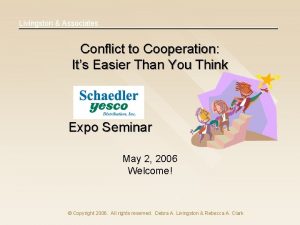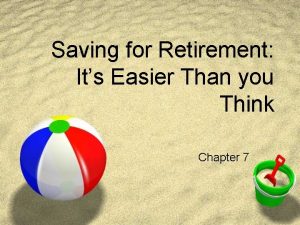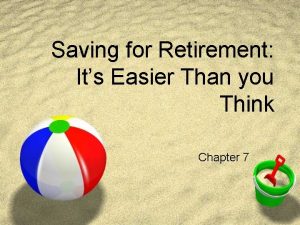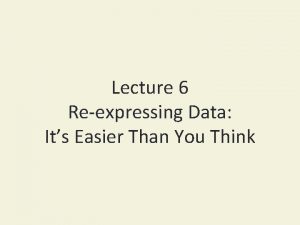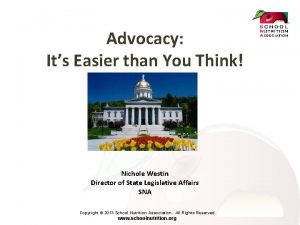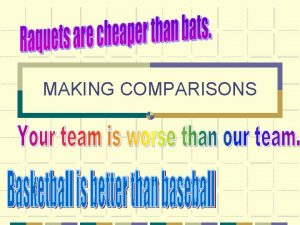Team Teaching in the Classroom Its easier than




























- Slides: 28

Team Teaching in the Classroom It’s easier than you think!

Session Objectives � You will… � understand the rational for why team teaching is beneficial � learn how it can be implemented � see an example of Team Teaching in action � see how to determine a team teaching topic or focus � have the opportunity to ask questions � have the opportunity to get started

Rationale � Providing multi level ESL students the opportunity to learn and practice together � Develop learning relationships � Partner and small group work � Additional opportunity for speaking and understanding English � Students benefit from and establish familiarity with both teachers � Provides variety in ways of learning English � Peer support, encouragement and motivation � Teachers spark ideas for each other. Two heads are better than one! � It’s fun and gratifying for the students and teachers!

Implementation � Be intentional – Your weekly structure, thinking and organization support team teaching!

Implementation � Establish identical a common syllabus – not necessarily

Implementation Lynn’s Emergent English Class Weeks 3, 4 & 5 – Community Resources [Text: TO: 9, 12; AS: 2; V: 5] Topic/Vocabulary: Around Town (maps, directions), Transportation, Destinations. Grammar: Questions with Do/Does, Where, How. Using There is, There are. Prepositions of location (next to, on, across from, between), Transportation in/on. Speaking/Listening: Ask and answer questions of related to the location of a person or place. Describe a neighborhood or location. Phonics / Pronunciation: Letter names and sounds: d, n, r, g, t, l, long vowels: o, i Writing/Reading: Read / write words and simple sentences with long o and I words. Write about own street. Read signs and a map. Capitalization and punctuation. Career Connection: Jobs in the community and jobs related to transportation Renee’s Beginning English Class Community Resources Week 3 Maps and Directions (All Star unit 2, Ventures unit 5) Skills and Activities- giving/getting directions, naming buildings and places, reading, drawing, interpreting maps Career Connections- DMV –getting a driver’s license Week 4 Transportation Skills and Activities-using public transportation to reach destinations, using geographical directions (N, S, E, W), learn about public services, traffic and street signs, addresses. phone numbers Career Connections- reading/using time schedules, getting a library card Week 5 Destinations Skills and Activities- public vs. private locations, find/use community resources, practicing skills from weeks 3, 4 Career Connections- the importance of being punctual

Implementation � Establishing a common planning time for Teaming � Determine logistics of space to accommodate joint classroom activities. � Decide on frequency, and time for the classes to come together. � Get your feet wet…start small.

Implementation � Example of lesson plan page with team times:

What Are the Skills and Topics? � Back to our common syllabus… standards from syllabus (CCRS) Speaking and Listening: (SL. K. 2 -3, 1. 1, 1. 4, 1. 6) using listening / speaking etiquette rules, asking and answering questions, forming sentences, saying words correctly so others can understand (pronunciation). Reading: (RI/RL. 1. 1, 2. 1, RI. 1. 2, 1. 7, RF. K. 2 & 1. 2) segmenting and blending sounds and syllables in words, decoding words and learning the meaning of new words, gathering meaning from a written text. Writing: (W. 1. 3, 1. 4, 1. 6, 1. 8, L. K. 2 & 1. 2) putting words into sentences and questions; using grammar and punctuation, putting thoughts or information into writing; spelling common sound patterns. Grammar: (L. K. 1 & 1. 1) using common, proper and possessive nouns, usingular and plural nouns with matching verbs, using personal, possessive, indefinite and demonstrative pronouns, using past, present and future tense of verbs, using common adjectives, conjunctions, articles, prepositions, and using question words (interrogatives). Numeracy: (l. NBT. 2, 1. 4, 1. 5; 1. OA. 2, 1. 6, 1. 8; 1 MD. 2, 1. 4) counting, cardinality, number sense, number operations, developing an understanding of measurement and interpreting simple graphs/data. Standard Outcomes Reading (RI 1. 1 -1. 9) main topic, key details, connecting information in texts, identifying and using text features to comprehend, asking and answering questions related to content, finding textual evidence to support answers Writing (W 1. 3 -1. 8) explanatory, narrative and “how to” including topic, related sentences to form a paragraph on a topic, supporting details, closure, transitional words, sequence, graphic organizers, lists, note taking, completing forms, using technology in writing Speaking and Listening (SL 1. 1 -1. 6) responding, adding information to conversation, clarifying by asking, describing, speaking audibly, expressing ideas clearly and in complete sentences, when appropriate, recognize/use basic grammar conventions for understanding and speaking, recognize/use present, past and future tense, use sequence of events, follow multi- step directions Language/ Grammar (L 1. 1 -1. 6) nouns, verbs, adjectives, conjunctions, question words, sentence types, capitalization, punctuation, commas, spelling patterns, sorting, attributes, real life word connections, role playing word meanings Reading Foundations (RF 1. 2 -1. 4) rhyming words, short/long vowels, consonant blends and digraphs, blending and segmenting syllables, decoding, high frequency sight words, irregular words, spelling Numeration (2 NBT. 1 -. 8, 3 NBT. 1 -. 3) Numbers and operations using base 10, measure in standard units, interpret data using graphic organizers

CCRS – College and Career Readiness Standards � www. vrae. org � https: //lincs. ed. gov/publications/pdf/CCRSta ndards. Adult. Ed. pdf

What Are the Skills and Topics? � Addressing different levels, intentional vs random pairings � Selecting targets - lesson plan page top portion

What it looks like in action! � Planning together – formally and informally (insert picture)

Keeping in mind our desired outcomes Lynn’s Emergent English Class Weeks 3, 4 & 5 – Community Resources [Text: TO: 9, 12; AS: 2; V: 5] Topic/Vocabulary: Around Town (maps, directions), Transportation, Destinations. Grammar: Questions with Do/Does, Where, How. Using There is, There are. Prepositions of location (next to, on, across from, between), Transportation in/on. Speaking/Listening: Ask and answer questions of related to the location of a person or place. Describe a neighborhood or location. Phonics / Pronunciation: Letter names and sounds: d, n, r, g, t, l, long vowels: o, i Writing/Reading: Read / write words and simple sentences with long o and I words. Write about own street. Read signs and a map. Capitalization and punctuation. Career Connection: Jobs in the community and jobs related to transportation Renee’s Beginning English Class Community Resources Week 3 Maps and Directions (All Star unit 2, Ventures unit 5) Skills and Activities- giving/getting directions, naming buildings and places, reading, drawing, interpreting maps Career Connections- DMV –getting a driver’s license Week 4 Transportation Skills and Activities-using public transportation to reach destinations, using geographical directions (N, S, E, W), learn about public services, traffic and street signs, addresses. phone numbers Career Connections- reading/using time schedules, getting a library card Week 5 Destinations Skills and Activities- public vs. private locations, find/use community resources, practicing skills from weeks 3, 4 Career Connections- the importance of being punctual

Community Resource Unit �Broken down into three sub units over three weeks: ◦ Destinations – Places around town ◦ Maps and Directions ◦ Transportation

Examples of Team Activities

Destinations We divided the students into small groups and walked to five local destinations focusing on location prepositions and directional words.

Destinations Students were encouraged to use the prepositional and directional words we had been practicing in the classroom as we walked to each location. This provided a real life opportunity to practice their skills.

Maps and Directions For this activity we randomly divided the students into two groups. In Lynn’s group students were practicing naming locations and giving directions using a mock 3 D town.

Maps and Directions This activity was scaffolded. First students cut out and learned the names of pictures of common locations in a city.

Maps and Directions Next we gave the students directions for placing their building on their own maps. The goal was to understand verbal directions and place the buildings on a map. Finally students partnered and had to tell their partner where to place each building on the map.

Transportation Another scaffolded lesson … This time in preparation for a field trip to a local shopping center we used a map of the shopping center and had students become familiar with the store names and locations. Each student had a plastic bear and were asked to follow the verbal directions to reach a destination on their map. This activity built on the previous weeks’ skills.

Transportation After practicing reading a bus schedule and discussing the route and times with the Team Group we took the CATA bus to the shopping center. We waited at bus stops for the scheduled arrival and departure of our bus and also made bus transfers. (ALL IN THE POURING RAIN!)

Transportation

Transportation Once we arrived the students had the opportunity to explore the different shops that had been described on the maps used earlier in the classroom. It provided many opportunities to reinforce directional vocabulary as well.

Transportation This was the real life culmination of the previous three weeks of classroom learning.

Some Final Thoughts � As you get in the teaming mode and as you plan for your own classroom lessons you will intentionally start thinking of activities to use for your team lessons each week. � Bring these ideas to your team planning time. � Vary the activities in your team teaching from week to week. � HAVE FUN and watch the smiles on your students’ faces! � Team Time will be a highlight in their week!

Questions

Jump In! � Rational…Why do we want to team teach? What do we see as benefits for our ESL students? � Think about our weekly schedule. Identify 1 -2 times during the week we could team teach. � What topic are we teaching next week? � What common skills do we want to team teach with our topic? (CCRS standards) � Brainstorm ideas for interactive activities that we could do together with our classes. ◦ Areas to consider: speaking/conversation, asking and answering questions, listening, practicing new vocabulary, reading, writing and/or grammar. (You may need to look through your curriculum materials to spark ideas).
 Why its easier than ever
Why its easier than ever Why is gas easier to compress than a liquid
Why is gas easier to compress than a liquid Why was italy easier to unify than greece
Why was italy easier to unify than greece What is used to make a cast of a tool mark?
What is used to make a cast of a tool mark? Communication-it's much easier than done
Communication-it's much easier than done The roman world takes shape
The roman world takes shape Sourima mal
Sourima mal Ways to address grammar in the writing classroom ppt
Ways to address grammar in the writing classroom ppt Examples of compound machines
Examples of compound machines Device that makes doing work easier
Device that makes doing work easier Types of pulleys simple machines
Types of pulleys simple machines Fixed pulley
Fixed pulley How does a wedge make work easier
How does a wedge make work easier Geography of sw asia color by number
Geography of sw asia color by number I can easier teach twenty
I can easier teach twenty A device that helps make work easier to perform
A device that helps make work easier to perform How do machines make work easier
How do machines make work easier An easier way to choose contrasting structures is to pick
An easier way to choose contrasting structures is to pick Contoh caesar cipher
Contoh caesar cipher Is it easier to push or pull
Is it easier to push or pull Remaining
Remaining Making work easier
Making work easier Making work easier
Making work easier Credit unions are for-profit organizations. true false
Credit unions are for-profit organizations. true false Bureaucratic bypass syndrome
Bureaucratic bypass syndrome Team spirit becomes team infatuation
Team spirit becomes team infatuation The white team cheers for the blue team, just like
The white team cheers for the blue team, just like Introduction of team teaching
Introduction of team teaching Conclusion of model of teaching
Conclusion of model of teaching




